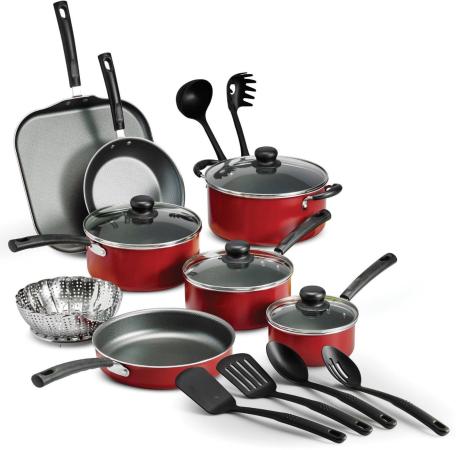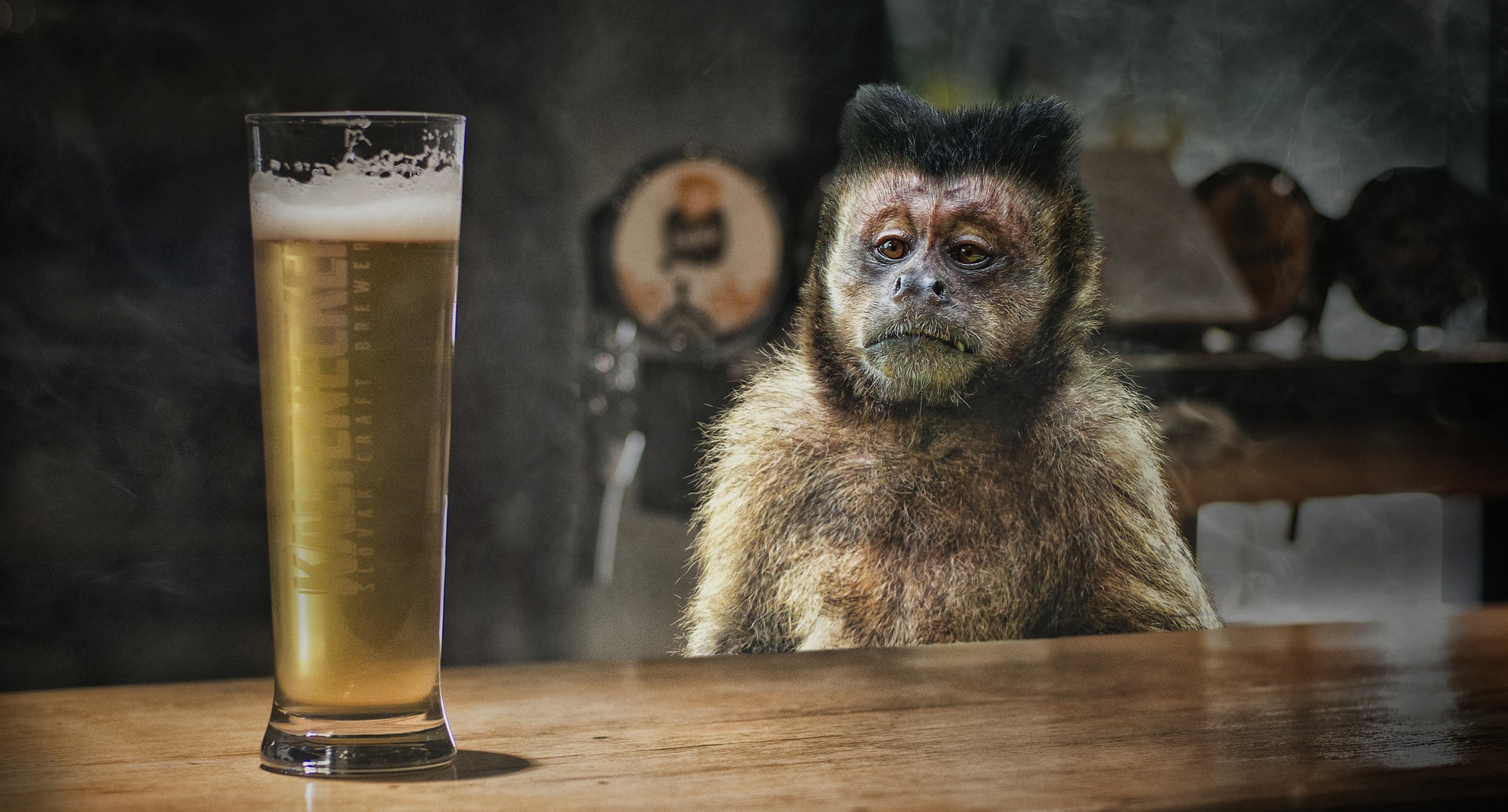Last updated on November 9th, 2023 at 06:06 am
Every experienced cook has a different varieties of pans and pots. Pans and pots are different because of their functions. The primary concerns for most when procuring a pan or a pot are:
- Are they dishwasher safe? meaning if you are not up to handwashing a pan or pot, it can be washed in a dishwasher without damaging it.
- Non-Stick pans allow food to brown without sticking and allow easier removal of cooked food particles.
Pans and pots are made from different materials and depend on what you wish to use them for. The materials include:-
1. Ceramic
Ceramic is a material made from clay that is hardened by high heat. It’s a non-toxic cookware option, withstands high temperatures and does a pretty good job at being non-stick.
2. Aluminum
Aluminum is the most abundant metal on earth. It’s an element in the boron group on periodic table of elements (AI). It’s used for making all kinds of things, including cookware. Pans and pots made from aluminum are very long-lasting.
3. Glass
Glass-ceramic is also used for cookware. It’s not cheap though. It’s selling feature is it’s a pollution-free cookware option.
4. Stainless Steel
If you want high-end, top-notch cookware, stainless steel offers some good options. Stainless steel’s benefits include easy-to-clean, reasonably decent heat transfer, no toxins and lasts quite a long time.
5. Copper
You’d think copper cookware would be frighteningly expensive, but it’s not. It’s not the cheapest either, but for many households, it’s a viable option. The main reason you’d opt for copper kitchenware is it distributes heat evenly and heat adjustments take effect almost immediately. It’s also easy to clean. However, the better copper pots and pans are those lined with stainless steel because they last longer, as opposed to tin.
6. Cast Iron
If you’re a diehard cast iron fan, you can get cast iron cookware sets that pretty much provide most of what you’ll need with kitchenware. Cast iron is popular because it can handle high heat, it’s indestructible, improves with age and if handled properly, develops a non-stick surface (without the use of chemicals)
Whether you’re looking to upgrade your existing cookware set or are just in the market for one or two new pans, here’s the ultimate guide for every type of pan and pot you need to complete any cooking task
Types of Cooking Pots
Pots are cookware with higher walls that can hold water or sauces. You can certainly cook with a pot food that you’d cook in a pan, but it’s more difficult to manage. Pots can be used on a stove or in the oven. Most can’t be used in a microwave because they contain some form of metal.
Here’s a list of different types of cookware pots:
a. Sauce pots
There are two main types of sauce pots. Those with handles on both sides and those with one long handle
The two-handle sauce pot is technically the only type of sauce pot.
The single handle sauce pot is also referred to as a sauce pan.
b. Dutch oven
A Dutch oven is a large cast-iron pot that can be used on the stove or placed in the oven. It’s terrific for cooking large meat dishes that require a lot heat. Other dishes include soups, stews, roasting, frying, casseroles and even baking bread. In some ways, you could probably get away with cooking most meals with a Dutch oven. The enamel-coated Dutch oven is also called a French Oven.
c. Stock and soup pots
A stock or soup pot is a large, deep pot for making large quantities of soups, broth, stock or stews.
d. Steamers
A steamer pot is one with a metal screen that sits inside, above the bottom. You place water on the bottom and the steam cooks whatever you put in the steam insert. This is great for steaming vegetables.
e. Pasta pots
A pasta pot is designed to cook pasta. There are two main types of pasta pots;-
The first is one with a perforated locking lid so that you can pour the water out and be left with cooked pasta.
The other type of pasta pot is one with a metal strainer insert, which goes inside a large pot. When pasta is done cooking, you lift the metal strainer out and end up with cooked pasta in the strainer. Basically it’s a large, deep steamer.
f. Double boilers
A double boiler is like a steamer, except the insert is a pot with no holes. These are good for food that cooks best with steam heat such as melting chocolate.
g. Casserole pots
While you can definitely cook casseroles in a Dutch oven or slow cooker, you can also buy specific pots designed for making casseroles.
h. Milk warmer
Most people won’t get a milk warmer, but if you like warm milk and prefer not doing it in a small sauce pot, you can actually buy a pot designed for warming milk on the stove.
i. Pressure cooker
A pressure cooker has a sealing lid that traps all the liquid and steam inside the pot. The pot pressurizes as soon as the contents come to a boil, cooking the food inside up to 70% faster. Stovetop pressure cookers used to be kind of dangerous, but today’s models are better rated for safety.
j. Brazier
If you love making braised dishes but a heavy, cast-iron Dutch oven isn’t right for your kitchen, look for a brazier. These short, wide pots have a similar capacity to Dutch ovens, but they’re made from stainless steel. That makes them friendlier for induction and glass cooktops.
Types of Pans
Pans also go on the stove or in the oven but have lower walls or none at all. They’re ideal when you need to handle the food such as flipping and rotating it.
1. Frying pan (sauté pan)
It’s technically a sauté pan. It’s a flat, circular pan with low-rise, straight walls.
b. Skillet
A skillet is much like a sauté pan, but the low-rise walls are slanted.
c. Grill pans
A grill pan is designed to replicate grill cooking on the stove.
d. Griddles
Griddles are great if you like cooking big breakfasts. You get plenty of flat surface area for eggs, pancakes, hash browns, etc. They’re especially good for pancakes, steak and burgers since you can cook an entire batch so much more quickly than relying on a single frying pan. There are two types of griddles. One is an electric with its own heat source. Another is a stock-top griddle that you place on top of the stove.
e. Saucepans
A saucepan looks like a pot (tall walls) with a single long handle.
f. Omelet pans
They are used specifically for omelets. There are two different types of omelet pans;
Lid-style omelet pan:-
Open-top omelet pan:-
g. Roasting pans
A roasting pan is for roasting large pieces of meat. The pan is usually rectangle in shape with a rack sitting on the bottom suspending the meat above the bottom.
h. Wok
These small-bottomed, fluted-edge pans are typically used for Asian cuisine. They heat up quickly for stir-fried dishes, but you can also use them for steaming dumplings or deep-frying food. Carbon steel woks are the most traditional, but there are several options for stainless steel or nonstick woks.
i. Casserole pan
A casserole pan is similar to a Dutch oven but with shorter sides. The most versatile models are made with cast iron and contain a lid, allowing you to use them on the stovetop or in the oven. They maintain steady heat and are great for low-and-slow cooking, like stews or oven-baked casseroles.
j. Crepe pan
These pans are very similar to egg pans and frying pans, but they have flat edges instead of fluted sides. It’s so much easier to get a spatula under a pancake or crepe when the pan’s lip doesn’t get in the way! They’re available with and without nonstick coating.
k. Paella pan
These pans are specifically designed to make the perfect paella. They’re wide, round and shallow to allow the rice to cook in a flat layer so it absorbs more liquid and retains more flavor.
Moving Pots and Pans
Pots and pans are generally easy to move because they’re durable, but their awkward shapes can make them hard to pack—and they take up a lot of space. Most pots and pans need a medium- to large-size moving boxes. Large boxes are best if the pans are lightweight and/or can be packed with other lightweight items. Otherwise, stick to smaller boxes, so they aren’t too heavy.
Unlike glassware and fragile items, pots and pans don’t require packing paper for protection, except for glass lids, but you need some newspaper for packing material. You also need packing tape and a marker to seal the box and label it, so it ends up in the right room.
- Place slightly scrunched-up plain newsprint or brown paper in the bottom of the moving box. Don’t scrunch the paper into tight balls, but rather let it balloon on the bottom to prevent shifting during the move.
- Make sure all pots and pans are clean and ready to pack. Remove anything lose, and either pack it separately or place it inside the pot and secure it with tape.
- Stack the pots and pans in groups of threes, nesting smaller pots inside larger ones. Lids can be wrapped and packed separately.
- Wrap glass lids and other fragile or breakable items with packing paper or dish towels.
- Fill the box with the nested pots and pans and lids. Stuff soft, moldable kitchen items, such as sponges, cleaning cloths, and towels, into empty spaces in the box to ensure that nothing shifts during the move.
- Add pantry items on top, if there’s room. This is the perfect place to put bags of flour, dried beans, or other pantry items that won’t break.
- Tape the box well and mark it with “Kitchen” and a description of the packed items. If the box includes fragile items, write “Fragile” in large letters on the top, and note which end of the box is up. If desired, you can also add a number to the box, indicating the order in which the boxes should be unpacked.
Pans and Pots are the most important cookware in your kitchen. While you may not own all the different kinds, it is important to own the ones that give you different cooking options. Pans and Pots for specific food help in bringing out the best in that food while make sure it’s well cooked. So while trying to experiment on that new recipe you found on YouTube, get yourself the right pan and pot to start off your cooking adventure right.








